The Emerging-Semantics Web (”The Semantic Web is Dead”)
Mor Naaman, a research scientist with Yahoo Research Berkeley, stood in front of a roomful of semantic Web researchers and declared that the semantic Web is dead. This happened last week at the International World Wide Web Conference in Alberta, Canada, as Naaman describes on the Yahoo Research Berkeley blog. [Search Engine Watch]
The language used to describe the Semantic Web is complicated enough – at a glance, it looks a bit quantum theory-ish, just enough to make your eyes roll back into your head to look for ways to kill themselves – but Tim Berners-Lee, who's responsible for all those Ws littering your URLs, inspired enough faith that whatever the Semantic Web was, it could be accomplished. [Arguing The Semantic Web: Dead Or Just Not Alive?]
May 16, 2007 on 10:24 am | by Mor Naaman, a research scientist @ Yahoo! Research Berkeley:
Last week, I participated in a WWW2007 panel called “Multimedia Metadata Standards in a Semantic Web 3.0“, where I took the opportunity to declare the Semantic Web dead. As you can imagine, such a declaration in front of a crowd of semantic web researchers provoked many responses. While I believe panels should be provocative and entertaining, I also have specific reasons for why I went as far as calling the Semantic Web “dead”. Let me explain what I mean.
There is no way that we can engage the masses in annotating media with “semantic” labels. At best, we can get the people to annotate content (such as Flickr images or YouTube videos) with short text descriptions or tags. This works only because tags are simple; powerful (can be used for many tasks) and, in some systems, carefully engineered to match the user’s natural motivations. Our best hope is to be able to take this bottoms-up annotation, or folksonomy if you will, and try to assign some semantics to it later - Flickr’s Clustering is a great example, as well as Y!RB’s TagMaps and our upcoming SIGIR paper (”Towards Automatic Extraction of Event and Place Semantics from Flickr Tags”, available in pdf)... continue reading
See also my related posts:
Labels: Best Practices, Infostructure, Internet, Reading, Web, Web sight



2 Comments:
I agree...
I think the semantic web will actually be something more user-centric.
The number of users generating content, or being immersed in content, is staggering. While social networks such as the "open" Facebook like to think they have a hold on the market, a REAL social network exists between users on the outside of the "walled garden."
By leaving this comment on your blog, I have a certain degree of trust in what you say. If I start commenting regularly, that trust increases. If you respond to my comments, the trust might be mutual.
If I send an e-mail to someone, that also means I put a higher level of trust in them... What if I add your blog to my blogroll? Yep, that's a higher level of trust as well.
That's user-centric semantics. That associates information with users and builds relationships based on who you interact with and how much. Eventually, this would allow interoperability between information and services. If you have your "calendar" at Google Calendar, and your friends are at 30Boxes, that's fine - you can still collaborate because information is attached to YOU, not the third-party service.
Take care,
Robert
http://www.humansy.com
Silicon Valley Entrepreneur & Strategy Consultant Sramana Mitra, after receiving reactions and feedback on her definition of Web 3.0, writes a follow-on synthesis explaining why the Semantic Web can only be implemented in a Contextual Domain. Thus, Web 3.0 according to her, is a Verticalized, Contextualized, Personalized Web.
Links: http://sramanamitra.com/blog/1165
http://sramanamitra.com/blog/572
http://sramanamitra.com/blog/775
Post a Comment
<< Home